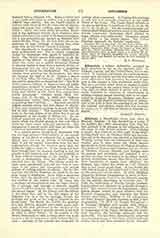

Afflighem, a Benedictine abbey near Alost in Brabant, Belgium. It was founded by a party of six knights who, after abandoning their wild life, had resolved to do penance in the religious life on the scene of their former excesses. After building a church, they received, in 1084, a gift of the neighboring lands from the Countess Adela and her sons. The rule of St. Benedict was adopted, a Benedictine, Wederig, having been the instrument of their conversion, and in after times the abbey became known for its strict observance of religious discipline. The Dukes of Brabant and Lorraine, and the Counts of Flanders, Louvain, Brussels, and Bologne were its patrons and protectors, and regarded it as a coveted privilege to be buried in the abbey church. Several monasteries, among them Maria-Laach, owe their foundation to monks from Afflighem. St. Bernard, who visited the abbey in 1146, declared that he had found angels there. It was during this visit that an image of Our Lady is said to have replied to the salutation of the Saint. In 1523, Afflighem joined the Bursfeld Congregation—a union of Benedictine Monasteries formed in the fifteenth century for the stricter observance of monastic rule. In 1569, the Archbishop of Mechlin became commendatory abbot and exercised his authority through a prior. This continued until the Suppression. Archbishop Boonen desired to sever relations with the Bursfeld Congregation and introduce the Monte Cassino observance. Yielding to his solicitations, the Prior, Benedict Haeften, founded, in 1627, a new congregation, “B. M. V. in Templo Praesentatae”. It included Afflighem and several other Belgian monasteries. It was dissolved in 1654. In 1796, in consequence of the French Revolution, the monks were dispersed, the buildings destroyed, and the lands sold. The last Prior, Beda Regauts, preserved the miraculous image of Our Lady, and the staff and chalice which had been presented by St. Bernard. These came into the possession of the Benedictine, Veremund Daens, who, in 1838, began a new foundation at Termonde, which was transferred in 1869 to Afflighem. The first abbot of the old abbey was Fulgentius (1088-1122). Among the more prominent of his successors may be mentioned Franco, (1122-35), the author of twelve books “De Gratia” (P.L., CLXVI), Albert, whose devotion to Our Lady won him the title Abbas Marianus, and Benedict Haeften, the author of several works of art.
H. M. BROCK

